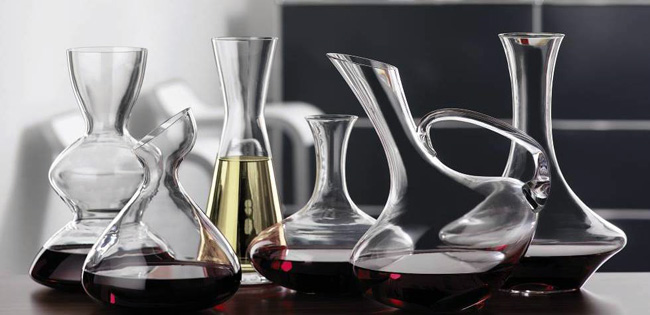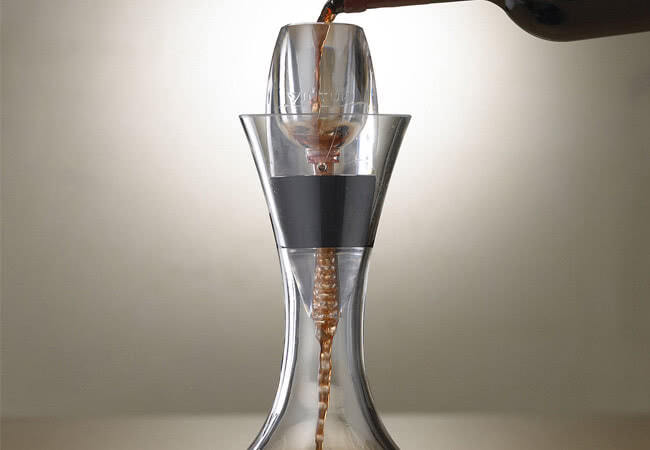THE FAMOUS WINE VENTILATION!

The famous wine ventilation
Before we begin we must point out that ventilation is a mysterious technique that magically enhances aromatic and flavor characteristics of wine. On the other hand there are some unpredictable situations that aeration may lead to the opposite result.
Majority claims that ventilation is particularly applied to dry red wines. We would add that even young red wines require ventilation while, as it may sound strange, ventilation fits in Vinsanto, young Santorini and oaked whites like Chardonnay.
The experts know that in a proper glass with the shape of tulip, open in the middle and more closed at the top, the wine can”breathe”the same, as in the decanter, if we can wait for 15 to 20 minutes (the time can depend on the type of wine).
Apart from the traditional and completely effective way of ventilation by decanting in a carafe, technology has advanced! Aerators achieve similar results in seconds!
The inside of the ventilation device is constructed in that way so the wine that passes through it contacts with air in its entire surface and with an increased pressure. So when the wine will arrive in our glass has undergone a very rapid oxygenation similar with this that occurs from decanting in a carafe for a long time.

But what ventilation is?
Think of wine as a set of compounds, enclosed in a bottle. Some of these are full of juicy fruity flavors and aromas, while others smell bad but they are necessary for the winemaking process. Fortunately, in general, undesirable compounds evaporate much faster when the wine is aerated, leaving behind the good ones!
When you decant a wine you expect to see two different reactions. The first is the oxidation and the second is the evaporation. Oxidation happens once you remove the cork from the bottle, while the evaporation takes place during the process. The combination of these two helps unwanted and bad smells that remind musty or even rotten egg (especially in red aged wines) to be reduced significantly allowing the wine to express its true self.
But do not be fooled, the time that the wine arrives in perfect condition with ventilation, is short. After that, aromas are reduced and their intensity is lost.
Wines with high concentration and density are favored by ventilation. Delicate and very aged wines take only a few minutes before their aromas begin to get lost, so be aware.


